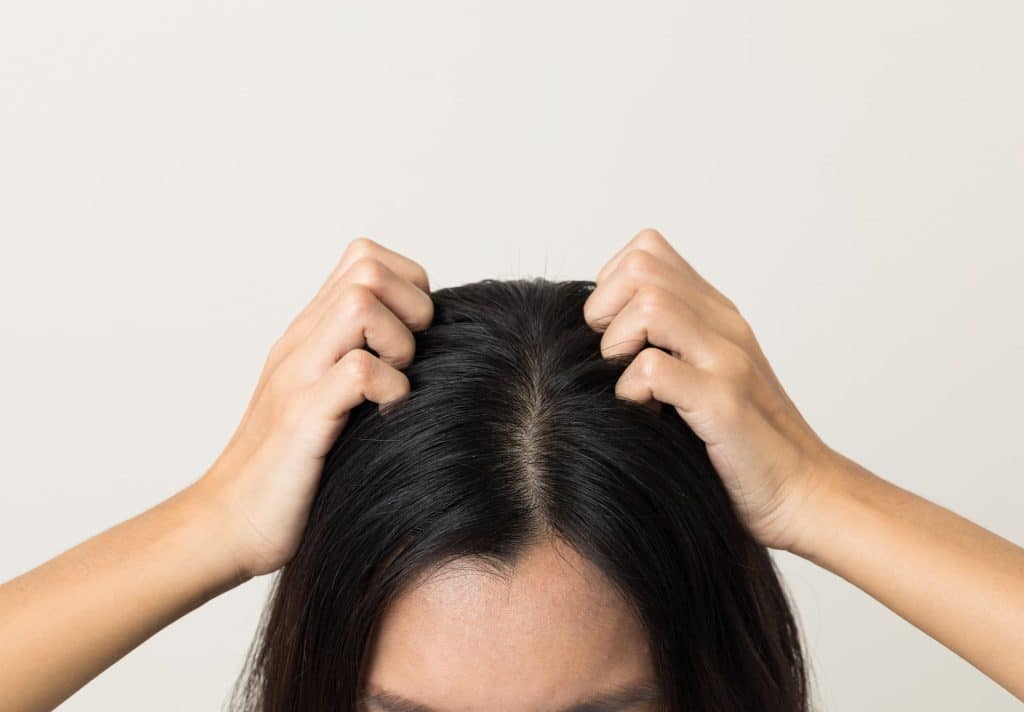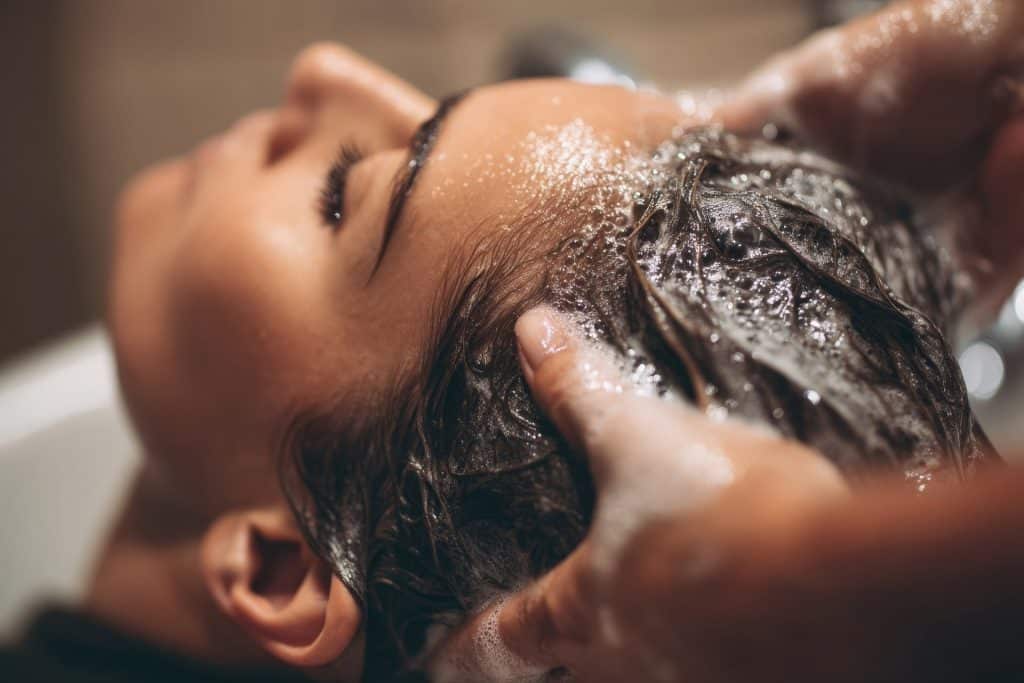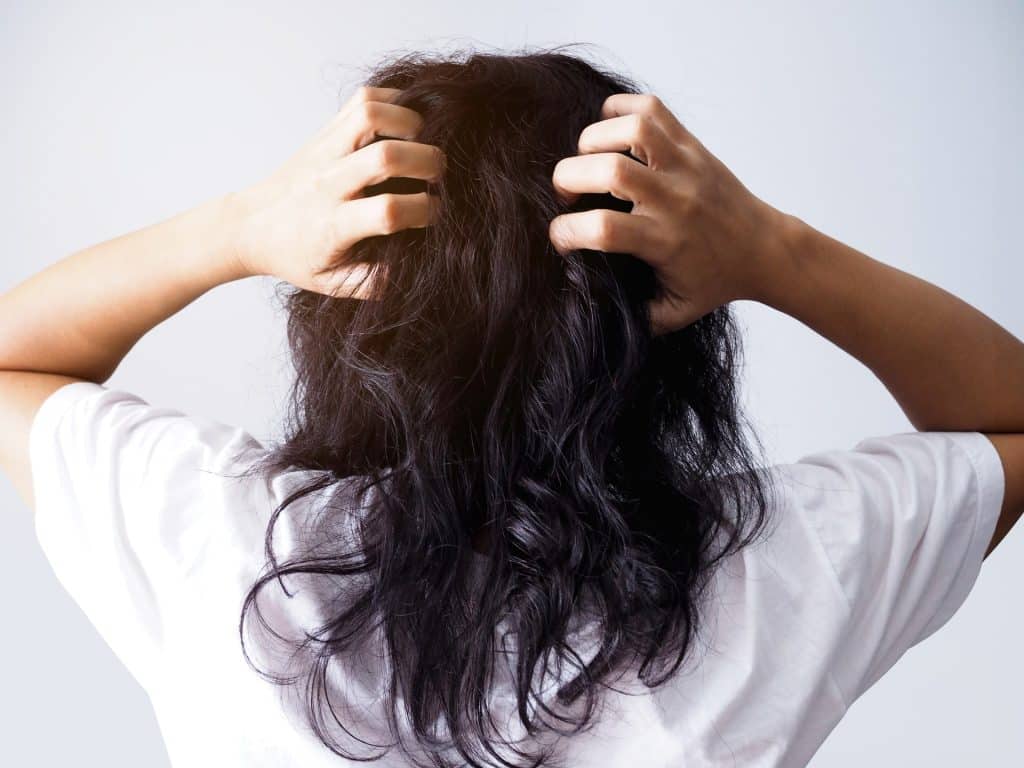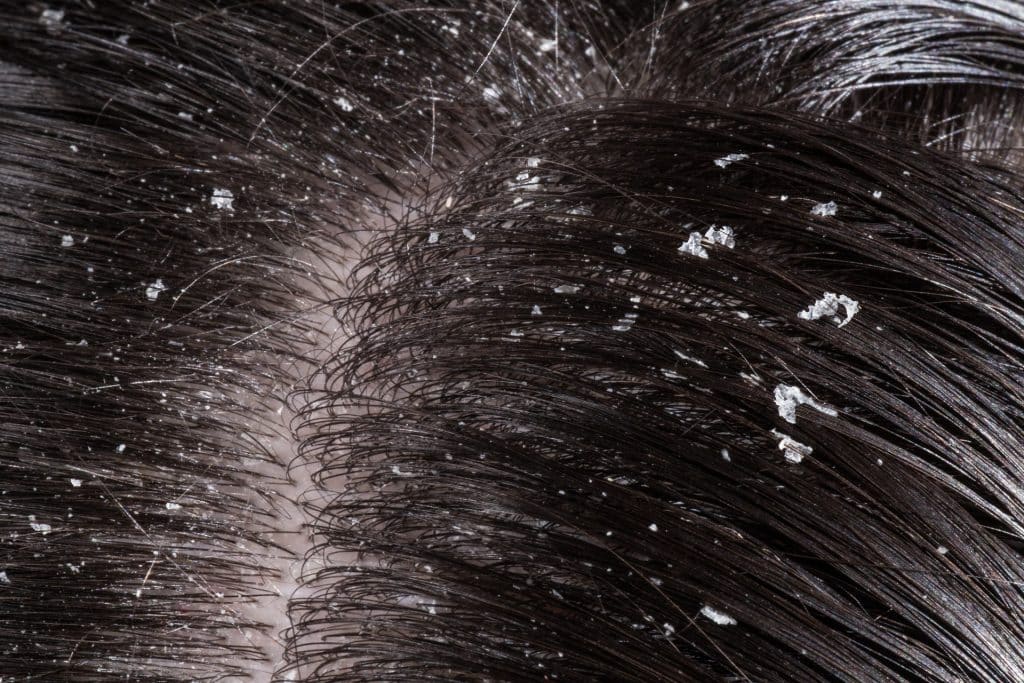Dealing with hair loss can be distressing, and many hope for a solution. However, numerous myths and misconceptions often cloud the journey to finding the right solution.
For those already grappling with the anxiety of hair loss, these myths can add unnecessary worry and confusion. In this article, we clear the air by debunking common myths about hair loss and growth treatments, helping you focus on what truly works and make informed choices about your hair health.
Hair Loss Myths
Hair loss only happens to men
One of the most common myths about hair loss is that it only affects men. While male pattern baldness is more common and often more noticeable, women also experience hair thinning and loss.
Female-pattern hair loss is a major concern, especially after menopause, due to hormonal changes. During menopause, levels of oestrogen and progesterone, which help keep hair in the growth phase, decrease significantly.
Women also experience increased hair fall after childbirth because of the hormonal shifts during and after pregnancy. The biggest difference between both is how the hair loss sets in and progresses – for males, they tend to thin around the forehead and crown, while women thin on the top of the scalp.
Frequent shampooing causes hair loss
Many people believe washing their hair too often can lead to hair loss. This myth likely stems from seeing hairs in the drain after a shower. However, shedding 50 to 100 hairs per day is normal and is expected in the hair growth cycle.
Regular shampooing helps maintain a healthy scalp by cleansing excess oil, dirt, and dead skin cells. The key is to use a gentle shampoo suited to your scalp type.
Only older people experience baldness
Hair loss is often linked to ageing but can occur at any age. While the risk of hair loss increases with age, young people can also experience it due to genetics, hormonal imbalances, stress, poor nutrition, and certain medical conditions. Early management and proper care can help manage hair loss more effectively.
Wearing hats will cause thinning
The idea that wearing hats can cause hair thinning or loss is a common myth. Hair follicles receive their nutrients from the bloodstream, not from the air.
As long as your hat is not excessively tight, it will not affect your hair growth. To prevent scalp issues that indirectly affect hair health, maintain good scalp hygiene and ensure your hat is clean.
Scalp care is unnecessary
Neglecting scalp care is a significant oversight when addressing hair loss.
Regular cleansing, exfoliation, and moisturising can improve scalp health, reduce dandruff, and prevent conditions that may contribute to hair loss. Using products specifically designed for scalp care can make a notable difference.
Hair growth treatment myths
Only hair transplants can help with hair loss
Hair transplants are a well-known solution for hair loss, but they are not the only option. Various non-surgical treatments have effectively promoted hair growth and reduced hair loss. Some effective hair growth treatments include minoxidil, finasteride and hair microneedling. If you still have baby hair present, microneedling may work very well.
Hair growth treatments are costly
While some treatments can be expensive, affordable options are available. Over-the-counter treatments like minoxidil and certain supplements can be cost-effective.
Some clinics even offer payment plans or financing options for more advanced treatments. Research and compare different treatments and their costs to find one that fits your budget.
Hair growth treatments have too many side effects
Concerns about side effects can deter people from seeking hair growth treatments. While some treatments may have side effects, they are often mild and temporary.
For example, minoxidil can cause scalp irritation, and finasteride may lead to decreased libido in a small percentage of users.
You should discuss potential side effects with a hair and scalp specialist and weigh the benefits against the risks.
Hair growth treatments are painful
The fear of discomfort can prevent people from pursuing hair growth treatments. While treatments like microneedling might cause slight discomfort, most are well-tolerated.
Professionals are trained to use techniques and products to minimise discomfort. In fact, many treatments are designed to be as painless as possible. To date, our patients find our microneedling procedures very comfortable; most liken them to getting a scalp scratch.
Hair growth treatments are not effective
It’s normal to be sceptical about the effectiveness of hair growth treatments. Fortunately, treatments like minoxidil, finasteride and microneedling have produced positive results, promoting hair growth and reducing hair loss.
Which hair growth treatment should I choose?
The right hair growth treatment depends on your specific situation and preferences. Here are some considerations:
Identifying hair loss
Before deciding on a hair growth treatment, you must understand the type and extent of your hair loss. Common types include:
- Androgenetic alopecia: The most prevalent hair loss type. It is also known as pattern baldness, often hereditary. Androgenetic alopecia typically presents as a receding hairline and thinning at the crown in men, while women usually experience diffuse thinning on the top of the scalp.
- Telogen effluvium: Hair loss brought on by stress, illness, or hormonal changes. It occurs when many hair follicles simultaneously shifts to the inactive, resting phase of the hair growth cycle, causing increased shedding.
- Alopecia areata: Patients with this type of hair loss experience hair loss in patches. It is caused by an autoimmune condition in which the immune system attacks hair follicles.
- Traction alopecia: This hair loss type occurs due to prolonged tension on the scalp by tight hairstyles. Hairstyles that damage the hair follicles by pulling on the hair can turn it into a permanent condition.
Treatment options
Microneedling
Microneedling is performed using a device with tiny needles to induce micro-injuries on the scalp. This process kickstarts collagen production and enhances the absorption of topical hair growth solutions, such as minoxidil or specialised serums. Regular microneedling sessions can improve scalp health and promote hair growth over time.
A study found that microneedling combined with minoxidil was significantly more effective than minoxidil alone in increasing hair count and density.
Who is it for: Suitable for those whose hair is in the catagen or telogen phase and have baby hair.
Results with hair growth treatments will vary depending on the individual and the treatment used, but most experience significant improvements. It can take several months to see noticeable results, so patience and consistency are key.
Minoxidil
Minoxidil stimulates hair follicles and increases blood flow to the scalp. It is suitable for men and women and can be found in different concentrations, typically 2% and 5%. Regular application of minoxidil can result in thicker, fuller hair over time, though it may take several months to see noticeable results.
Minoxidil is a well-studied hair growth treatment. One study found that 5% topical minoxidil significantly increased hair regrowth in men and women with androgenetic alopecia (AGA) compared to a placebo.
Who is it for: Suitable for those with early to moderate hair loss. It is easy to use and available over the counter. It’s effective for both men and women and can be integrated into your daily routine.
Oral finasteride
Finasteride is an oral prescription medication mainly used to treat male pattern baldness. It works by limiting the production of dihydrotestosterone (DHT), a hormone that miniaturises hair follicles and contributes to hair loss.
Finasteride has been demonstrated to effectively slow hair loss and promote hair regrowth in many men. Over two years, it significantly increased hair count and density in men with androgenetic alopecia.
Who is it for: Oral finasteride is primarily for men with patterned hair loss. Women should avoid finasteride due to risks during pregnancy.
Consulting a specialist
Before you decide on a hair growth treatment, it is best to consult a hair and scalp specialist. They can provide customised recommendations based on an evaluation of your condition and guide you through the advantages and disadvantages of each treatment.
Consulting a specialist also means you will receive a tailored plan that maximises your chances of success.
Hair growth treatments by TrichoLab
Signature Microneedling Hair Growth
TrichoLab’s signature hair growth treatment is an option for those seeking clinically proven results. This treatment uses a microneedling system to create tiny punctures in the scalp and stimulate collagen production.
It enhances the absorption of hair growth and features an anti-hair loss formula, a blend of botanicals, peptides, and growth factors designed to rejuvenate hair follicles and promote healthy hair growth.
Hair Loss Prevention Treatment
We also offer an effective Hair Loss Prevention Treatment that integrates our hair and scalp care expertise with botanical ingredients like Ginkgo Leaf Extract and Vitamin E.
This treatment involves a specialised series of products, including a mask, shampoo, and ampoule, designed to clear away scalp buildup, strengthen hair roots, and effectively prevent hair loss. This treatment can help maintain a healthy scalp environment conducive to hair growth.
Hair growth treatment in Singapore
By debunking the myths about hair loss and treatments, we hope to provide clarity and confidence to those struggling with the condition. Understanding the realities of hair loss and your treatment options in Singapore can empower you to make better choices and take proactive steps towards healthier hair.
TrichoLab’s approach to hair growth treatment combines technology with the right ingredients to comprehensively care for hair and scalp health. Our treatments address the root causes of hair loss and promote sustainable growth.
Book an appointment to learn more about TrichoLab’s hair growth treatments.




